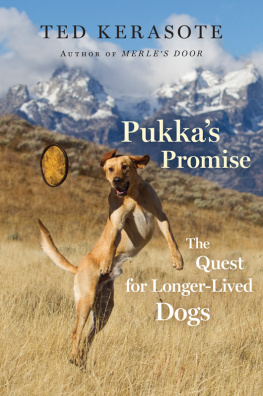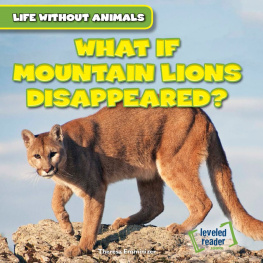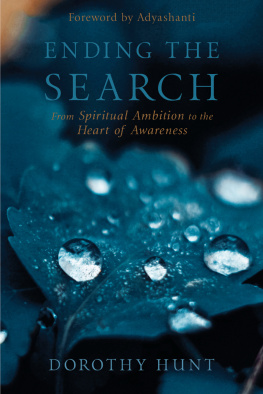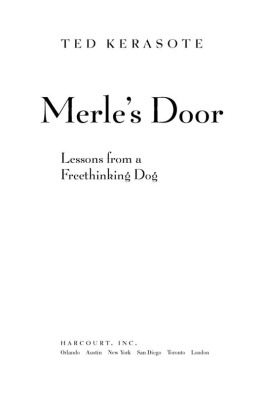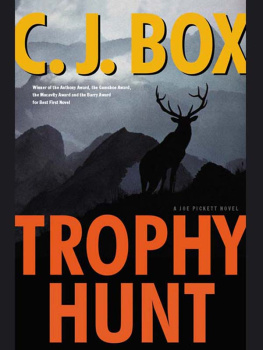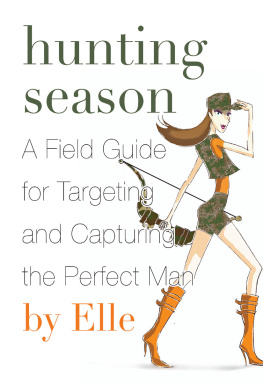Bloodties
Nature, Culture, and the Hunt
Ted Kerasote
Copyright 2013, Ted Kerasote
Cover photograph by Ted Kerasote
for home
Many people gave generously of their time and knowledge, their food and their homes while I researched this book. My debt to them is enormous; my appreciation for their kindness will always remain.
I wish to thank particularly Henning Thing, formerly the director of wildlife management for the Greenland Home Rule, and now at the Danish Polar Center. Henning helped me find a suitable village in which to live, arranged transportation, and was a constant gloss on Greenlandic customs and society. Sven Nielsen, the headmaster of the Kullorsuaq school and my primary translator, and his wife, Emilie, opened their home to me, answered hours of questions, never lost patience. Edvard Nielsen also gave of his time, shared his music, and made me laugh. Nicolai Jensen took me back in time. From Upernavik, Karsten Meyer helped minimize the cost of my lodging while in Greenland, making a very expensive trip financially lighter, and Paul Alex Jensen provided a singular insight into the ways of the Greenlandic hunters. And to all the people of Kullorsuaq, kujanak, thank-you, for sharing your lives with an inquisitive writer.
Several biologists helped me to understand arctic ecology. Randall Reeves, of McGill University, never tired of talking about narwhals, and introduced me to many other researchers. Ian Stirling, of the Canadian Wildlife Service, explained the fine points of polar bear behavior. Thomas Smith, of the Canadian Department of Fisheries and Oceans, critiqued the section on ringed seals. Ted Granger, now retired from the Canadian Department of Fisheries and Oceans, and Michael Bradstreet, the director of the Long Point Bird Observatory, outlined the interrelationship of predators and prey along the ice edge.
In Alaska, Fran Mauer, of the U.S. Fish and Wildlife Service, Arctic National Wildlife Refuge, has been a constant sounding board and a good friend over the years. In Wyoming, I wish to thank Bruce Smith, of the U.S. Fish and Wildlife Service, National Elk Refuge, for our many helpful discussions, Steve Cain, of Grand Teton National Park, for reviewing some of my ideas on the park hunt, and Steve and Marylynn French, of the Yellowstone Grizzly Foundation, for increasing my knowledge of bears. Jim Halfpenny, of the Institute of Alpine and Arctic Research, has been a fine instructor of ecology and tracking. Brad Stelfox, formerly Director of Research at the Teton Science School in Jackson Hole and now at the Alberta Environmental Center, increased my knowledge of hoofed mammals.
Without the assistance of the late Lloyd Zeman, of Safari Outfitters in Cody, Wyoming, and Rosohotrybolovsoyuz (The Russian Hunting and Fishing Union), much of the section on trophy hunting could not have been written both opened doors and enabled me to travel to Siberia. Bob Kubick, Paul Asper, Don Cox, and Ali stay were especially cooperative in explaining their thoughts on trophy hunting, as was C. J. McElroy. They have my appreciation for fielding many sensitive and personal questions. Vance Corrigan was generous in sharing his knowledge of the history of sheep hunting. Bruce Keller, a former vice president of Safari Club International, was not only receptive to the idea of this book and introduced me to hunters in that organization, but was also candid where others have been mute.
Although their story doesnt appear in this book, as I once thought it would, the Hayden family, of the Sheenjek River in the Arctic National Wildlife Refuge, showed me the sort of subsistence life-style that predominates across the boreal zone of arctic America. For their hospitality, both in summer and winter, while caribou hunting, on the trap line, and through the deep cold of a January in the Brooks Range, I will always be indebted and have fond memories. The pilot of the Arctic National Wildlife Refuge, Roger Kaye, the bush pilot from Fort Yukon, Roger Dowding, and the flying schoolteacher, Roger Wegel, also helped me to see aspects of Alaskan bush life for which Im grateful.
In Wyoming Bob Ciulla introduced me to a side of hunting that I would not have otherwise experienced, and Benj Kaghan and Michelle Sullivan gave me the opportunity to present my ideas on hunting and gathering through lectures at their respective organizations, the Teton Science School and the Snake River Institute. Dawn Iveson, of the Teton County Historical Society, reviewed some of the material on hunter-gatherers, and Ruth Valsing, my research assistant, and the librarians of the Teton County Library Micki Cook, Nancy Effinger, Teri Krumdick, Chickie Allin, and Sidney Smith helped with months of searches and photocopying. Clarrisa Smith taught me more about gathering plants for food and medicine. From California, Tom Mclntyre always engaged me in lively and thought-provoking discussions; from Montana, Tony Acerrano pressed the finer points of the philosophical debate on environmental ethics; from Washington, Susan Ewing provided perceptive criticism; and from Oregon, Barry Lopez gave me some invaluable points on doing research in the arctic. Jay Cassell and Tom Paugh, my editors at Sports Afield, have given me great freedom in addressing subjects whose themes were later incorporated into this work. They have my abiding respect for being courageous. Without the many, many early days that I spent with Peter Vasilas and Steve Booth, on the water and in the woods, the questions of this book would never have unfolded.
I am also indebted to Wayne Pacelle, Heidi Prescott, and D. J. Schubert, at The Fund for Animals, for their warm reception, their openness, and their willingness to engage in good-natured debate over many issues about which we disagree. Tom Regan at North Carolina State University and J. Baird Callicott, at the University of Wisconsin-Stevens Point, took time out of busy schedules to review their ideas with me.
Nick Lapham, of The Wolf Fund, read and critiqued the entire manuscript, as did Kim Fadiman. I wish to say a special and very deep thank-you to Kim, who pushed my thinking into subtler and more precise channels, and who has been a great intellectual and outdoor companion over the years.
In brief or ongoing dialogues, each of the following people also helped clarify my thoughts: in Wyoming, Len Carlman, Tucker Smith, Gene Ball, Mardie Murie, and Irene, John, Hope, and Nicolia Rallis; in Colorado, Steve Andrews, Bill Liske, and David Chrislip; in Alaska, Kimberly Johnson and Donald Novak; in Bhutan, the Tulku of Gantey Gompa; and in Nepal, David Shlim, Robin Houston, Pam Poon, and Chukinima Rimpoche.
Without the kindness of Donald and Gladys Kent, and Scottie and Daphne Dejanikus, who made living and working in Grand Teton National Park possible, this book wouldnt have taken shape in the same way. George and Elpis Kerasote never faltered in their enthusiasm and love. Elizabeth Kaplan, my agent, and David Rosenthal, my editor, supported me through the long haul. Elizabeth helped name this book.
To all of them, many thanks, namaste, tashi delay.
And especially to Richard Nelson friend and kindred spirit.
Finally, I must mention those teachers who have brought humility and compassion to my life. They are Michael Chandras, Kathie Stirling, Sheila Sandubrae-Davis, Trisha Scott, and Little Sparrow. In this role, the animals and country of the Yellowstone have been my most constant companions. Any misinterpretations of their teachings, and of the help so many have given, are my own.
CONTENTS
Text found within quotation marks or in blocks that I didnt personally record is cited at the end of the book. These notes are arranged by the page number on which the quoted material first appears, followed by the passages opening words.
Next page


